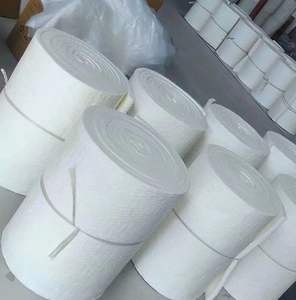Discover Premium Ceramic Products | Durability & Elegance United | Advanced Ceramics
1. Introduction
In a major development reported just 48 hours ago, global demand for high-performance ceramics—particularly silicon carbide-based products—has surged due to renewed investments in semiconductor manufacturing and clean energy technologies. According to a recent industry bulletin from Ceramic Industry Magazine, manufacturers are scaling up production of silicon carbide crucibles to meet the needs of next-generation silicon wafer and rare-earth metal processing facilities. This spike underscores the growing importance of silicon carbide crucibles not just in traditional foundries, but in cutting-edge tech sectors.

Silicon carbide crucibles have long been prized for their ability to withstand extreme temperatures and corrosive environments. But what many don’t realize is that silicon carbide’s utility extends far beyond industrial furnaces—it’s now appearing in everything from oven-safe bakeware to precision plumbing components. In this article, we’ll unpack the science, applications, and surprising versatility of the silicon carbide crucible and related products.
2. What Is a Silicon Carbide Crucible?
A silicon carbide crucible is a high-temperature container made primarily from silicon carbide (SiC), a compound renowned for its exceptional hardness, thermal conductivity, and resistance to thermal shock. Unlike traditional clay or graphite crucibles, silicon carbide crucibles maintain structural integrity at temperatures exceeding 1,600°C (2,912°F), making them ideal for melting non-ferrous metals like aluminum, copper, and zinc.
These crucibles are typically manufactured through processes like reaction bonding (RBSiC) or sintering, which yield dense, durable ceramics capable of repeated thermal cycling without cracking. Their longevity and efficiency translate into significant cost savings for foundries and metal recyclers.
3. Industrial Applications Beyond the Crucible
3.1. Structural and Thermal Components

While the silicon carbide crucible remains a cornerstone in metallurgy, silicon carbide’s applications have diversified dramatically. Products like rbsic silicon carbide tile blocks, silicon carbide ceramic columns, and silicon carbide bricks are now standard in kiln linings, heat exchangers, and wear-resistant surfaces. Similarly, silicon carbide burner nozzles and silicon carbide rings are critical in high-efficiency combustion systems due to their oxidation resistance and thermal stability.
3.2. Tubing and Piping Solutions
High-temperature processes also rely on silicon carbide ceramic tubes—such as silicon carbide thermocouple protection tubes, silicon carbide porous ceramic tubes, and silicon carbide mullite tubes—for precise temperature monitoring and gas flow control. These components are essential in tube furnaces and chemical processing plants where metal alloys would fail.
3.3. Precision Discs and Valves
Silicon carbide discs, including silicon carbide ceramic grinding discs, silicon carbide sanding discs, and even silicon carbide ceramic disc taps, leverage the material’s hardness for precision machining and reliable fluid control. The use of silicon carbide ceramic disk taps in plumbing ensures leak-free, long-lasting performance, even under abrasive water conditions.

4. Silicon Carbide vs. Other Advanced Ceramics
When evaluating high-performance ceramics, engineers often compare silicon carbide with alternatives like boron carbide and silicon nitride. Boron carbide vs silicon carbide debates usually center on hardness—boron carbide is harder—but silicon carbide offers better thermal conductivity and is more cost-effective for large-scale applications.
Meanwhile, silicon nitride ceramics, including products from a silicon nitride crucible factory, excel in fracture toughness and are preferred in dynamic load environments like bearings and turbine blades. Custom silicon nitride heat shields, silicon nitride plates, and silicon nitride rings serve niche roles where impact resistance is critical. The high purity silicon nitride powder market continues to grow, but silicon carbide remains dominant in static, high-heat applications like crucibles and furnace linings.
5. The Unexpected Rise of Silicon Carbide in Kitchenware
Perhaps the most surprising trend is the emergence of silicon carbide in consumer ceramics. Brands are now marketing silicon carbide ceramic dinnerware—including silicon carbide ceramic dinner plates, silicon carbide white ceramic plates, and even silicon carbide black ceramic plates—as premium, oven-to-table solutions. These items, such as the silicon carbide ceramic casserole dish with lid or silicon carbide ceramic pie dish, combine aesthetic appeal with unmatched thermal shock resistance.
You’ll also find specialized items like silicon carbide ceramic butter dish with lid, silicon carbide ceramic ramekins, and silicon carbide ceramic salad bowls. Even seasonal products like silicon carbide christmas ceramic platter and silicon carbide ceramic christmas plates are gaining traction among eco-conscious consumers seeking durable, non-toxic tableware. Unlike conventional ceramics, silicon carbide ceramic dishes for oven use can go directly from freezer to broiler without cracking.
6. Manufacturing and Customization Trends
Modern fabrication techniques allow for highly customized silicon carbide components. Whether it’s a silicon carbide ceramic baking tray for commercial kitchens or silicon carbide ceramic plates for painting (used by artists for their smooth, non-porous surface), manufacturers are responding to niche demands. Handcrafted options like silicon carbide handcrafted ceramic plates blend artisanal design with industrial-grade performance.
Similarly, industrial clients can order bespoke items like silicon carbide ceramic tube insulators or silicon carbide ceramic piping tailored to specific furnace geometries or chemical environments. This flexibility ensures silicon carbide remains relevant across both mass-market and specialized sectors.
7. Conclusion
From the heart of a metal foundry to the elegance of a holiday dinner table, the silicon carbide crucible exemplifies how advanced ceramics bridge industrial necessity and everyday utility. With ongoing innovations in material science and rising demand across semiconductor, energy, and consumer goods industries, silicon carbide—and its diverse product family including tiles, tubes, discs, and dinnerware—is poised for continued growth. Whether you’re melting aluminum or baking a casserole, silicon carbide delivers performance you can trust.
Our Website founded on October 17, 2012, is a high-tech enterprise committed to the research and development, production, processing, sales and technical services of ceramic relative materials such as 7. Our products includes but not limited to Boron Carbide Ceramic Products, Boron Nitride Ceramic Products, Silicon Carbide Ceramic Products, Silicon Nitride Ceramic Products, Zirconium Dioxide Ceramic Products, etc. If you are interested, please feel free to contact us.
